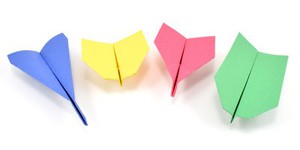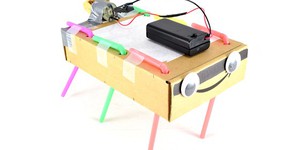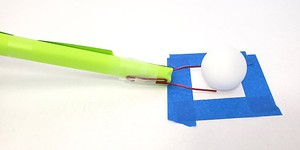Fourth Grade, Mechanical Engineering Lesson Plans (4 results)
If you're interested in object motion and enjoy building things or taking mechanical things apart to see how they work, then it sounds like you'd be interested in mechanical engineering.
|
Select a resource
Sort by
|
Lesson Plan
Grade: 3rd-5th
18 reviews
Are paper airplanes a nuisance in your classroom? They don't have to be! Those distractions can be a constructive learning opportunity: use them to teach your students about the engineering design process. In this fun lesson, you will be the "customer" ordering a paper airplane, and your student teams will be engineering companies that will manufacture planes. Before they start making planes, they need to define the criteria and constraints of this engineering problem.
Read more
NGSS Performance Expectations:
Featured
Lesson Plan
Grade: 6th-8th
7 reviews
Junkbots are easy-to-build robots that you can make using a simple circuit and some recyclable materials. In this lesson, your students will learn about engineering design as they compete to build the fastest robot. No previous robotics experience is required!
Read more
NGSS Performance Expectations:
Lesson Plan
Grade: 4th-8th
2 reviews
What would your students do if your town's water supply was cut off due to an equipment failure or natural disaster? Inspired by
Global Problem Solvers: The Series,
in this lesson plan they will tackle a real-world engineering challenge by building a prototype of a device that can manually pump water during an emergency. They will also think like entrepreneurs and come up with a business plan for how their device could be produced, sold, and used in the real world.
This lesson is one of…
Read more
NGSS Performance Expectations:
Lesson Plan
Grade: 3rd-5th
13 reviews
In this fun engineering lesson plan, your students will build devices from paper, tape, string, and paper clips to pick up and retrieve a ping pong ball. The challenge is to pick up the ball from as far away as possible! Middle school and
high school versions of this lesson plan are also available.
The 2023 competition is over, but you can see what students built and learn about the winners on the 2023 Engineering Challenge summary page.
Read more
NGSS Performance Expectations:
Lesson Plan
Grade: 3rd-8th
4 reviews
Coming up with new ideas is hard! How do engineers design new things or improve existing ones? Engineers and inventors use different brainstorming techniques to help them think outside the box and come up with new ideas. In this lesson plan, your students will practice brainstorming with a method called SCAMPER.
Read more
|
Explore Our Science Videos
Solar Panel Angle for the Junior Solar Sprint
Paper Roller Coasters - Fun STEM Activity!
How can air pressure prevent leaks?









